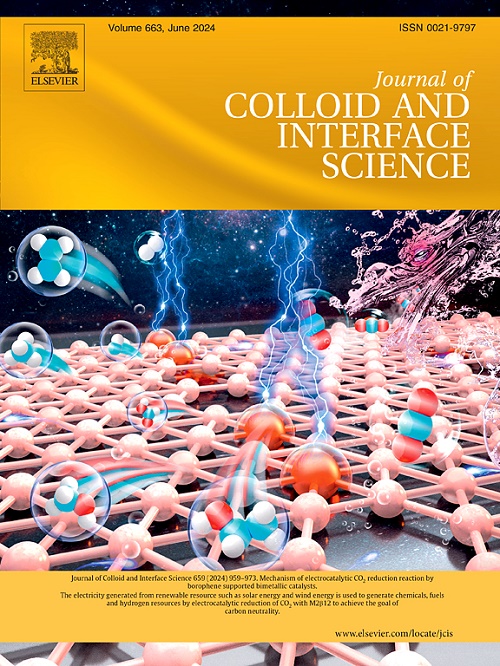Constructing core–shell phosphorus doped MnCo2O4.5@ZIS for efficient photocatalytic hydrogen production from water splitting
IF 9.4
1区 化学
Q1 CHEMISTRY, PHYSICAL
引用次数: 0
Abstract
Rational construction of core@shell heterostructured photocatalysts is the key to realize efficient hydrogen production from water splitting attributing to the accelerated photoinduced charges separation/transfer and enhanced light absorption ability. In this work, two-dimensional (2D) ZnIn2S4 (ZIS) nanosheets were in-situ grown on phosphorus doped MnCo2O4.5 (P-MnCo2O4.5) nanospheres to construct P-MnCo2O4.5@ZIS heterostructured photocatalysts for efficient photocatalytic hydrogen production. The optimized 6 wt% P-MnCo2O4.5@ZIS composite presents remarkable photocatalytic hydrogen evolution rate of 4197 µmol g−1 h−1 (8 times of single ZIS) along with excellent cycling stability, which is comparable to most previous reported ZnIn2S4-based or even noble-metal involved catalysts. The improved photocatalytic performance is resulted from the distinguished heterostructure and components of P-MnCo2O4.5@ZIS, in which the close contact interface facilitates the separation/transfer and inhibits the recombination of charges, and the uniform distribution of ZIS nanosheets on P-MnCo2O4.5 increases the active sites and fortifies the light absorption. The present work comes up with a prospective method for establishing core@shell ZIS-based heterostructured photocatalysts for efficient hydrogen generation.

构建核壳磷掺杂 MnCo2O4.5@ZIS,用于高效光催化水分离制氢。
合理构建核@壳异质结构光催化剂是通过加速光诱导电荷分离/转移和增强光吸收能力实现高效水分离制氢的关键。本研究在掺磷 MnCo2O4.5(P-MnCo2O4.5)纳米球上原位生长了二维(2D)ZnIn2S4(ZIS)纳米片,构建了 P-MnCo2O4.5@ZIS 异质结构光催化剂,用于高效光催化制氢。优化后的 6 wt% P-MnCo2O4.5@ZIS 复合材料的光催化氢气进化速率高达 4197 µmol g-1 h-1(是单一 ZIS 的 8 倍),同时具有优异的循环稳定性,可与之前报道的大多数基于 ZnIn2S4 甚至涉及贵金属的催化剂相媲美。P-MnCo2O4.5@ZIS 的独特异质结构和组分提高了光催化性能,其中紧密接触的界面促进了电荷的分离/转移并抑制了电荷的重组,而 ZIS 纳米片在 P-MnCo2O4.5 上的均匀分布增加了活性位点并加强了光吸收。本研究提出了一种建立基于核@壳 ZIS 的异质结构光催化剂以高效制氢的前瞻性方法。
本文章由计算机程序翻译,如有差异,请以英文原文为准。
求助全文
约1分钟内获得全文
求助全文
来源期刊
CiteScore
16.10
自引率
7.10%
发文量
2568
审稿时长
2 months
期刊介绍:
The Journal of Colloid and Interface Science publishes original research findings on the fundamental principles of colloid and interface science, as well as innovative applications in various fields. The criteria for publication include impact, quality, novelty, and originality.
Emphasis:
The journal emphasizes fundamental scientific innovation within the following categories:
A.Colloidal Materials and Nanomaterials
B.Soft Colloidal and Self-Assembly Systems
C.Adsorption, Catalysis, and Electrochemistry
D.Interfacial Processes, Capillarity, and Wetting
E.Biomaterials and Nanomedicine
F.Energy Conversion and Storage, and Environmental Technologies

 求助内容:
求助内容: 应助结果提醒方式:
应助结果提醒方式:


